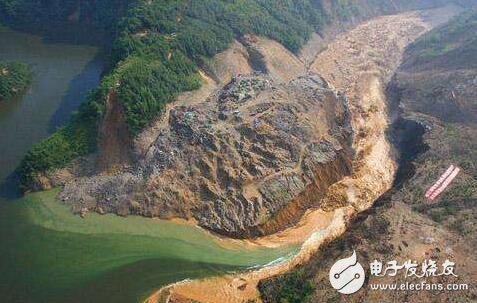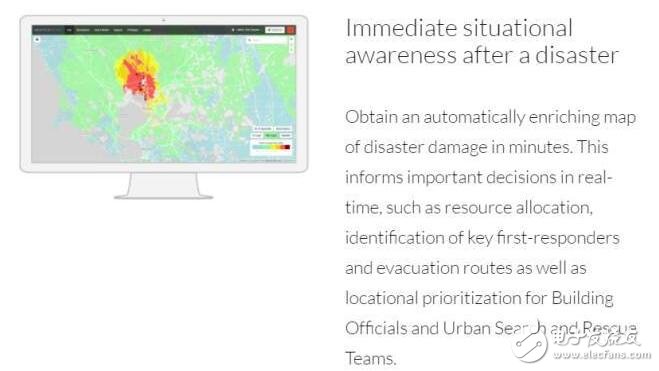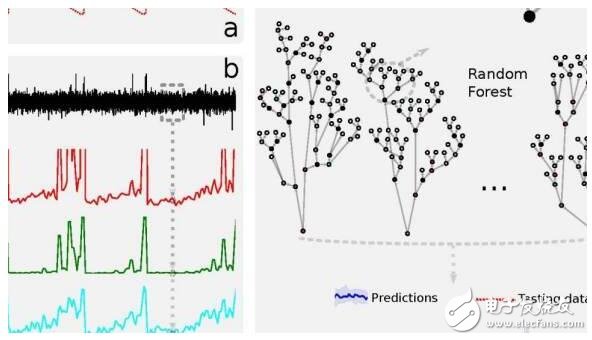A 7.0-magnitude earthquake occurred on the night of Sichuan Province, causing the epicenter to be located near the Minjiang fault, the Tazhong fault and the Huya fault. It is speculated that the seismogenic structure is the southern branch of the Tazhong fault and the northern section of the Huya fault. As of 8:10 on August 9, The number of victims increased to 12 (the number of newly added 3 is unclear), 175 people were injured (28 people were seriously injured); K79 at the 301 line of the road was interrupted, and there was still a stone at K83.
Today, we are eager to pray for the victims of the disaster-stricken areas. We hope that everything will be well. China’s sensing instruments for earthquake disasters have already been carried out in ancient times. Zhang Heng’s geodetic instrument is the crystallization of the wisdom of the ancestors, saving people in distress. At present, China's prediction of surface disasters has been more accurate. The improvement of sound wave testing and fracturing microseismic monitoring has established a solid warning for the earthquake in China.

In the past 10 years, the progress of geophysics, especially the application of digital seismic monitoring technology, has provided the necessary technical basis for small-scale micro-seismic research in a small range. In order to verify and develop the great potential of microseismic monitoring technology in underground rock engineering (such as geothermal hot water fracturing, reservoir dam, oil, nuclear waste treatment, etc.), a large group of Chinese research institutes and universities are united. Some major engineering application experiments have been carried out, and these experiments have also achieved good results.
However, why is the science and technology so prosperous today, we have ushered in the crisis again and again? Xiao Bian can not help but sigh, we study technology, create technology is not for people's happy life?
Why did earthquake prediction not bring practical significance?
Natural disasters such as earthquakes are difficult to predict, sometimes predictable, but the accuracy is very small. At present, the seismic detection system is the most developed in Japan, but Japan is not always suffering from earthquakes and casualties. Ding Renjie has previously introduced that most of the earthquakes occurred in the earth's crust below 15 kilometers underground. The current study of the earth's crust can only be drilled to the underground 12 kilometers through the rig, far from directly observing the whole process of earthquake occurrence. The indirect information on the internal structure and state changes of the earth's crust can be captured on the surface by means of limited instruments and equipment to judge the possibility of earthquake occurrence, so the difficulty coefficient can be considered high.
In addition, sometimes the Earthquake Administration can detect some earthquake information, but such a message is usually detected too much. He can't organize the evacuation of the earthquake as soon as he detects the earthquake, so the disaster still happened.
Maybe the earthquake AI can save the field.
Experts around the world have spent decades hoping to dig out earthquake-related phenomena such as ex-seismic, groundwater chemical changes, and even animal anomalies, but with little success. Later, the application of machine learning methods failed, so the seismologist Chris Scholtz of the Lamont-Doherty Earth Observatory said: "This is really a difficult puzzle to get started."
But artificial intelligence stood up, maybe AI is really the savior of our future successful prediction of the earthquake?
Locate the most affected areas and reduce losses to a minimum

Earthquakes can quickly find the most damaged areas, and perhaps save more lives in the first place. One Concern is developing this technology – in the few minutes after the earthquake, it immediately analyzes where the most affected areas are.
So how is this algorithm formed? One Concern first needs to download data about the age, type, building materials, etc. of a certain area. After that, researchers need to train a routine that understands how the earthquake damaged the building. By combining this knowledge with seismic data after the earthquake, One Concern CEO Wani said that the system they developed could efficiently predict building feedback on shock waves.
After the evaluation and analysis, the artificial intelligence system will generate a disaster map for the relief personnel to view. In the map, the most damaged buildings and the most affected areas will be highlighted. After multiplying the intensity of the disaster by the number of people, it is possible to estimate which area to go to for immediate relief.
Muller said that disaster relief related parties can use this system to train some of their earthquake relief drills to train their employees.
For earthquake zones in underdeveloped countries, researchers have adopted additional AI strategies because of insufficient building data. After the earthquake in Nepal in April 2015, AI researchers trained different methods to help change the ground and how disaster relief responded.
For example, after an early scan by artificial intelligence software, online volunteers will present a satellite image of the affected area, and then everyone will help identify which areas may be inhabited. If the judgment of the volunteers is the same as that judged by the AI ​​system, then these areas will be marked for review by the disaster relief professionals.
At present, two villages that have not been identified before have been discovered by ground-based disaster relief personnel, and timely disaster relief support was provided.
Second-order speed prediction earthquake within a time difference of 20:1

Geophysicist Paul Johnson of Los Alamos National Laboratory once said: "If you claim to have made progress in predicting earthquakes, others will say that you are probably stupid."
However, technologically improved machine operations and supercomputers, as well as the ability to store and process large amounts of data, have allowed Johnson's team to discover new breakthroughs in artificial intelligence. Johnson, who is working with several research institutions, also said: "If time goes back ten years, we can't do that." With more complicated calculations, he and his team are trying to do something that no one has ever done. What happened: Input raw data to the machine - these data are derived from the mid-late period of the field simulation of earthquake events in the laboratory, and have undergone a large number of acquisitions. Then they used algorithms to filter the data. In addition to laboratory simulations, machine learning began to use the actual temperature information in the original seismic data for the same type of machine learning analysis.
This is different from what scientists have predicted in the past. In the past, seismic data processed in the “earthquake catalogue†was often used to find prediction clues. The data set contains only the magnitude, location, and time of the earthquake, ignoring much of the other information. In contrast, Johnson's machine algorithm will pick up important predictive markers.
Chris Marone, a geophysicist at Johnson State University, has conducted some experiments with Johnson in the Earthquake Simulator Lab. The simulator can randomly generate seismic patterns and generate data from open source machine learning algorithms, and the results obtained by the system are also very impressive.
"Beep and Friction" occurs continuously as the simulated construction plate elapses, so that a reliable signal is picked up in the acoustic data by computer algorithms. As man-made crustal systems are closer to simulated earthquakes, the algorithm can reveal these noise changes in a very specific way. This means that Johnson can arbitrarily confirm this acoustic signal at any time to determine when the earthquake may occur.
For example, if a simulated earthquake would hit within 20 seconds, the researchers could analyze the signal and accurately predict the earthquake in less than a second. However, the current Johnson team is only pursuing a way to estimate the time of the earthquake, and can not estimate the magnitude of the earthquake. It can be seen that predicting the size of an earthquake will be a more difficult problem.
Although nature is much more complicated than a mock lab, artificial intelligence has done things that other technologies can't.
Why is artificial intelligence the best assistant for predicting earthquakes?
For disasters with many microscopic precursors such as earthquakes, it involves crust movements, magnetic fields, gravity, and even changes in the chemical composition of groundwater. These data or phenomena require continuous monitoring by professional instruments, and the amount of data can be seen as amazing. The analysis task is particularly heavy.
At this point, big data plus cloud service is the best partner, able to comprehensively analyze micro-precursors.
In addition, a research team from Kyoto University in Japan announced that it is expected to use a new method to predict a magnitude 7 earthquake in an hour or two. The research team found that there was an abnormal increase in the number of ionization electrons over the source before the occurrence of a major earthquake. Based on this, it was concluded that a large earthquake occurred. If the argument is true, the sensor can be predicted without going deep underground.
In addition, the MIT Artificial Intelligence Lab has invented an algorithm that, after training the algorithm with 600 hours of video, has been able to predict the next 5 seconds. If we strengthen the strength of the algorithm, input the trajectory of the Earth's motion to the system, improve its success rate and extend the prediction time, then the correct time to predict the collision will be just around the corner?
21.5 & 22 Inch Aio,All In One Desktop,All In One Touch Screen Computer,All In One Desktop Pc
Guangzhou Bolei Electronic Technology Co., Ltd. , https://www.nzpal.com